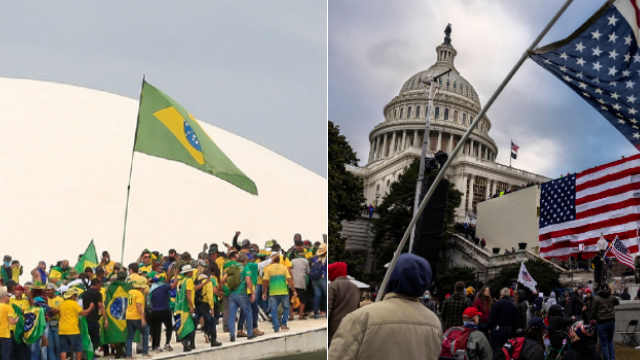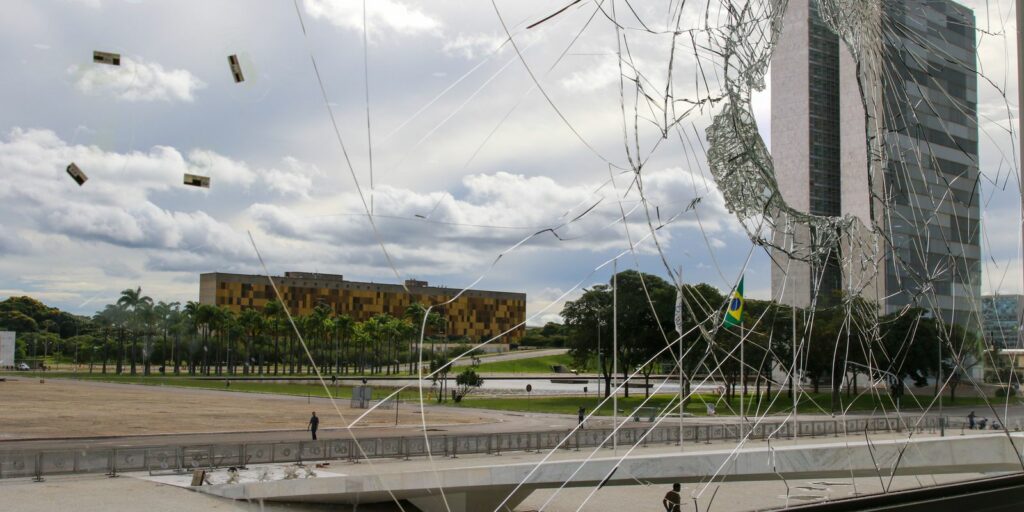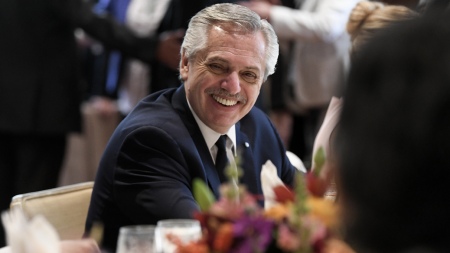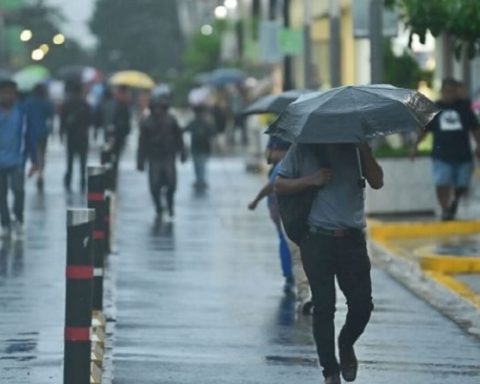January 9, 2023, 22:42 PM
January 9, 2023, 22:42 PM
The scenes of chaos and destruction that has stopped the assault by supporters of the former Brazilian president Jair Bolsonaro to the National Congress, the Presidency and the Federal Supreme Court of Brazil have disturbingly reminded those who lived in Washington two years ago.
So, thousands ofsupporters of President Donald Trump attacked the building of the Capitol to try to stop the certification of the elections that gave the winner to his political rival, the current president Joe Biden.
How are the two attacks similar and how are they different?
The similarities
In both cases, the protesters have taken the institutional buildings by force, leaving a huge trail of destruction in their wake.
In both Washington and Brasilia, the assailants managed to get past the small number of police officers who tried to stop them and made their way smashing windows and forcing doors.
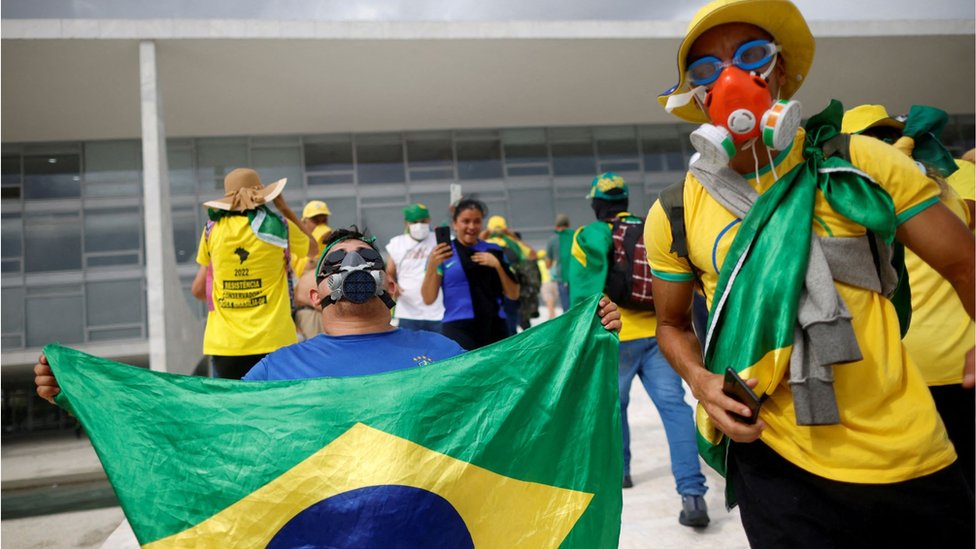
On Sunday, the Bolsonaristas left from the vicinity of the Army Headquarterswhere the followers of the former president who were calling for a military intervention after Lula’s triumph gathered, and advanced about eight kilometers to the Plaza de los Tres Poderes in Brasilia to invade the main buildings of the Republic.
Dressed in the colors of the national flag, the assailants staged numerous acts of vandalism and destroyed everything in their path. They broke glass, valuable antique furniture, as well as works of art, computer equipment and files.
As happened in the Capitol on January 6, 2021, a multitude of videos on social networks showed how some of the protagonists they took “trophies” of the Brazilian Congress.
In both cases, many of the protesters came from far away in the country.
In the case of Washington, the protesters had gathered in the morning on the esplanade known as “The Ellipse”, in front of the White House, to listen to speeches by Trump and some of his allies. From there they marched to the Capitol. Many had arrived the day before.
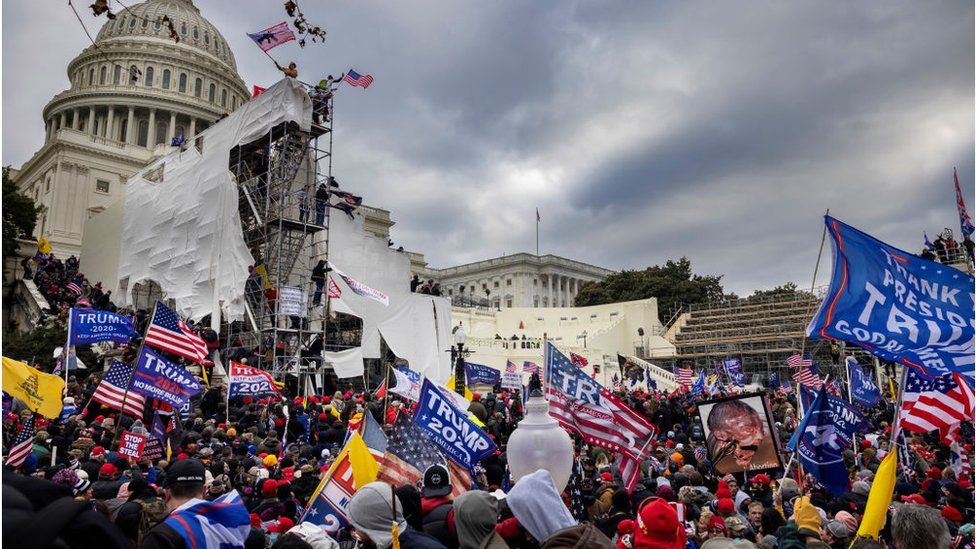
In Brasília, dozens of buses with participants in the attack arrived in the previous hours from other parts of Brazil to the capital to join the Bolsonaro camp. According to Justice Minister Flávio Dino, 40 of these buses have been identified and who financed them.
The violence was not only matrial.
Some 70 people, according to the Brazilian Ministry of Health, were injured on Sunday, including police officers and journalists, who were beaten by the crowd. At least 1,200 people have been arrested.
In Washington, five people were killed, and some 140 officers were injured. Four police officers who responded to the assault have since committed suicide.
Both the supporters of Donald Trump and those of Jair Bolsonaro are convinced, without any evidence, that fraud has been committed in the elections that their candidates lost and that, therefore, they fight to amend an injustice.
Just like Trump did (and continues to do in the US), Bolsonaro has spent months feeding the narrative that the elections those in which he was defeated were not fair, and he has sown doubts about electronic voting systems, which he says can be manipulated, following the same rhetoric of the former US president.
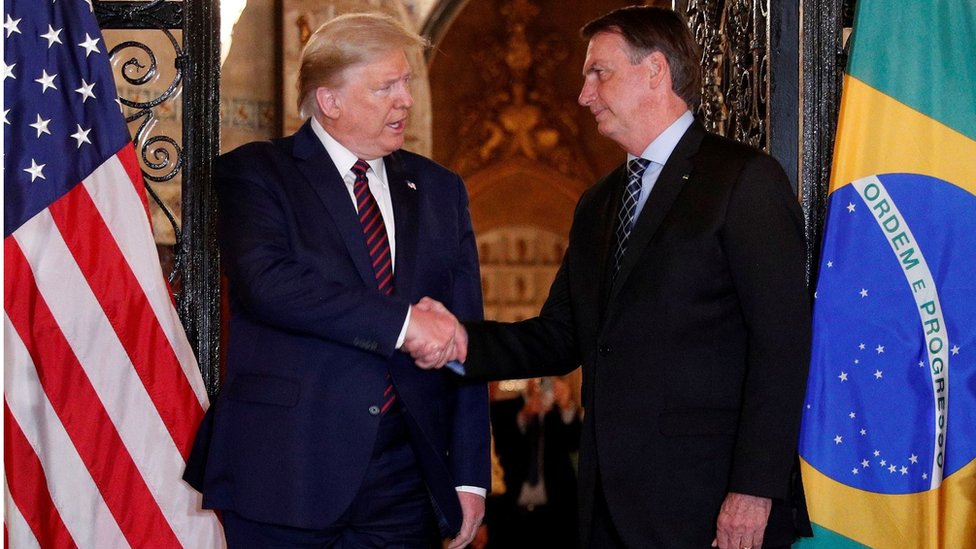
In very close elections, Luiz Inácio Lula da Silva won the presidential elections on October 30 and was sworn in on January 1.
Lula was able to present himself and win thanks to the fact that the conviction for corruption that made him spend 580 days in jail was annulled by the Federal Supreme Court.
In a deeply divided countrywhere extremist positions have been accentuated during the term of the extreme right-wing populist Bolsonaro, the return to power of a left-wing man and, precisely, his passage from prisoner to president, has been too much for his opponents.
Since Bolsonaro’s defeat at the polls, many of his followers have organized themselves in WhatsApp and Telegram chats to plan demonstrations and campouts such as those that take place in front of the barracks in various cities in the country.
This conspiracy speech that has been heard in Brazil is reminiscent of the one that has been part of the strategy of Donald Trump’s team since he lost the elections.
In fact, since the defeat at the polls, Bolsonaro’s team, including his son Eduardo, have been in contact with both Trump and his strategists. Steve Bannon or with the ex-spokesman of his campaign, Jason Miller, according to what the “Washington Post” revealed.
Bannon himself, ideologue of the new populist radical right and one of Trump’s main strategists, has described Bolsonaro as a “hero”, and has fueled the theory of the alleged “electoral theft” from his “War Room” podcast and on Gettr , the social network created by the former US president.
Both assaults occur a couple of months after the election in which their candidates were defeated.
Joe Biden won the elections on November 3, 2020although he was not sworn in as president until January 20, 2021.
Lula won the second round of the presidential elections, which took place on October 30, 2022, and took office on January 1, a week before the assault in Brasilia.
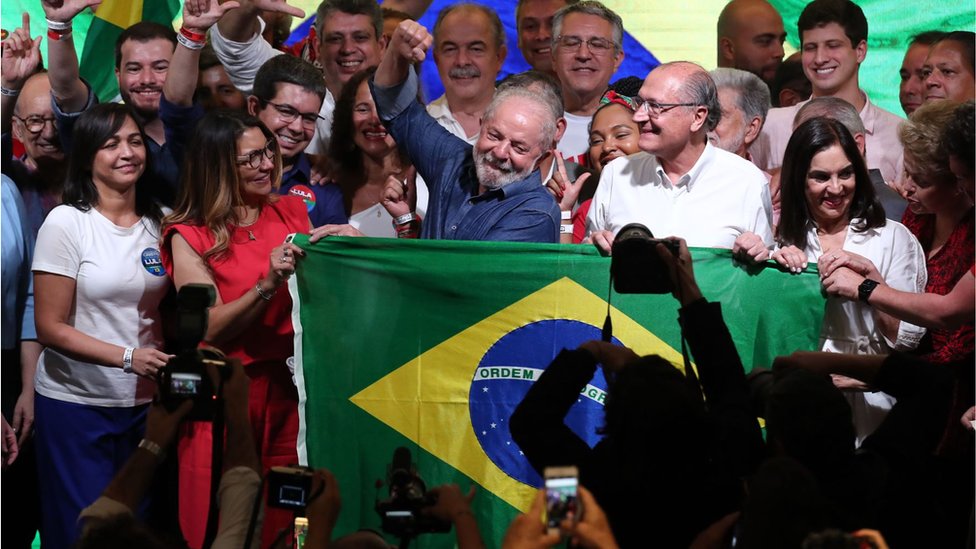
During those two months, the rhetoric surrounding the alleged fraud -never tested- was increasing in the networks and communication channels of his followers, until it exploded in attacks on institutions.
This weather has also allowed raiders get organized.
In the case of Brazil, the Ministry of Justice now investigates not only those who committed the acts of violence on Sundaybut instead is on the trail of those who started and financed them.
The differences
one. The role of the Army and the Police
Unlike what happened in the US, where the Trumpists were determined to retake power by their own means, in Brazil Bolsonaro’s supporters who have not accepted their defeat have spent months calling for military intervention to return the former president to the Planalto Palace.
Until last Sunday, the Brazilian Army, which has played a leading role during Bolsonaro’s term, seems to have tolerated the camping of this type of protesters in front of its barracks.
“Leading military figures have supported Bolsonaro’s far-right agenda for a long time, and even recently they have shown absolute support for various demonstrations in favor of the coup d’état that have taken place in different parts of the country in the days prior to the attack,” says the professor of Latin American History, Rafael R. Ioris, in The Conversation.
During his presidency, several senior military officers have held positions in the Government, including the MMinistry of Defense or even that of Health during the peak of the covid pandemic. It is also estimated that some 6,000 active military personnel received non-military positions in the government in the last 8 years.
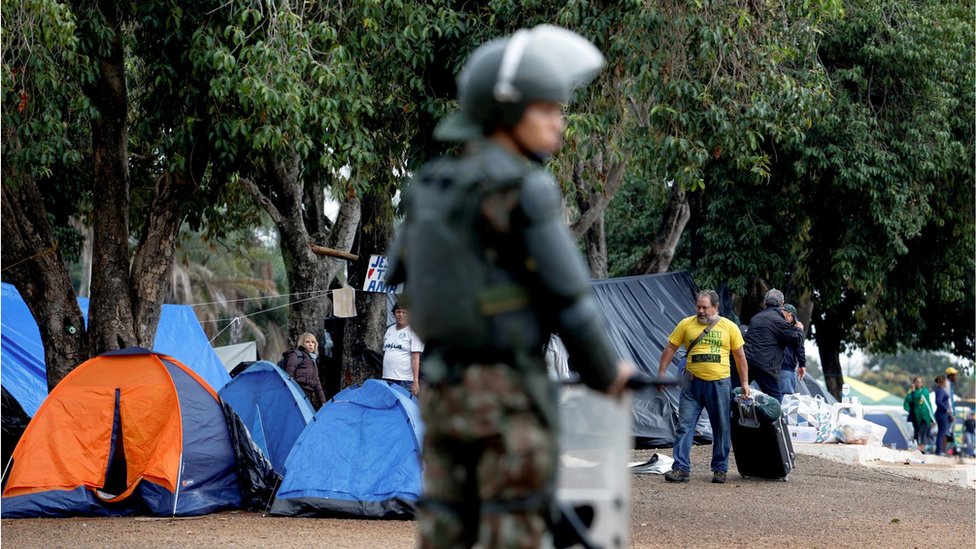
Since taking office, Lula has maintained a “conciliatory” position with the Armed Forces.
According to historian Carlos Fico, an expert on the military dictatorship that ruled the country from 1964 to 1985, “any government that took office now would have difficulties (in its relationship with the military), unless it were once again from the extreme right. So, I think the attempt to calm things down is understandable,” said in an interview with BBC News Brazil.
The police role during the assault has also generated doubts.
Brazilian media have released videos showing a apparent passivity of military policemen from the capital in front of the attackers, even having a relaxed conversation with them.
The person in charge of the security of the Federal District, Anderson Torres, who had been Minister of Justice under Bolsonaro, has been removed by the governor, and the government lawyer demands his arrest.
During the elections, certain sectors of the police were also criticized for establishing controls police on the highways to slow down access to the polls in regions where the majority was going to vote for Lula.
2. Trump was still president and Bolsonaro was not
The assault on the Capitol in 2021 occurred still under the mandate of Donald Trump. Although he had already lost the elections, the tycoon would occupy the White House until January 20, so at that time he held the highest authority.
Bolsonaro, however, left office on December 31 and has been in the United States ever since, specifically in Florida.
Some Brazilian media interpret this game as a strategy to avoid attending the inauguration of his successor, while his opponents see a preventive flight before the end of his presidential immunity, which could bring the former president to justice.
The same morning of the assault on the Capitol, Donald Trump gave a speech to his supporters in which he assured that he would never accept the result of the elections, and in which he asked his vice president, Mike Pence, to revoke the result.
Although he did not make explicit calls for violence, the speech was full of violent images and even asked them to march to the Capitol and “fight like demons” because if they didn’t, he told his followers, “they won’t have a country anymore.”
Bolsonaro, although He has been feeding theories for months that the elections have been fraudulents, on Sunday he disassociated himself from the events in Brasilia.
“Peaceful demonstrations are part of democracy. However, the looting and invasion of public buildings such as those that occurred today, as well as those practiced by the left in 2013 and 2017, deviate from the rule,” he said in a Twitter post. .
Both leaders, however, took several hours to react once the incidents began.
This Monday it was learned that Bolsonaro had been admitted to a Florida hospital, although his condition is not serious.
3. The Capitol was in full session
Another of the main differences between the two attacks is that, while the assault in Brasilia took place on a Sunday, with all the institutions closed, in Washington the Capitol, the building that houses the United States Congress and Senate, was in full swing. session.
And not in any session, but in the one that had as its mission certify the election result that they had declared Joe Biden the winner.
The Trump insurrectionists therefore sought to stop the peaceful transfer of power.
Unlike what happened in the United States, the Bolonaristas not only invaded the seat of the legislative power, but also that of the executive and the judicial powerpossibly waiting for others to join in their fight, including the Army.
Brazilian protesters wandered through the beautiful Oscar Niemeyer-designed buildings empty, encountering hardly any obstacles until the police managed to evict them.
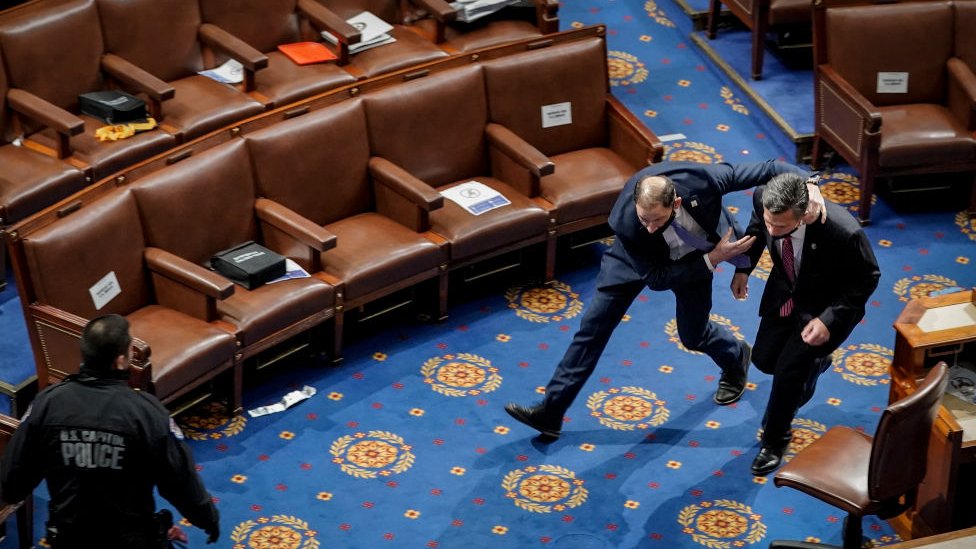
In the assault on the Capitol, however, the building was full of political representatives and their teams, as well as journalists and security forces, which caused the panic among those present.
Many had to hide in their offices, others their seats in the chambers, after which they could be evacuated in scenes that had never been seen in that country.
